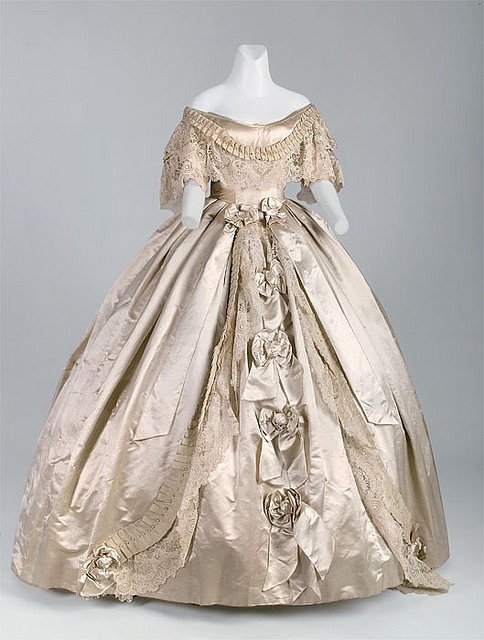The Birth of Runway Fashion
Runways and fashion shows have become synonymous with the elegance, creativity, and ingenuity of the fashion world. These fascinating events give designers a stage to present their most recent collections, making an impression on the audience. Fashion enthusiasts, business professionals, and the media watch as a parade of colors, materials, and styles come to life as soon as the first model steps onto the runway. Runway fashion shows are immersive experiences that take viewers inside the designer's universe, where art, skilled work, and stories meet. They are more than just displays of clothing. These performances represent the ever-evolving nature of fashion, establishing trends and influencing consumer tastes with each expertly organized performance.
Source: Balmain
The history of runway fashion shows goes all the way back to the middle of the 19th century. The idea of presenting clothing on a stage or runway first came about as a way for fashion designers to show off their most recent designs to a group of people, such as potential customers and the media. The shows start with the establishment of haute couture in Paris, France. Haute couture is the term used to describe high-end, custom-made garments designed by prominent fashion brands. To show off their collections to clients and journalists, these houses started to arrange private showings. The creator of haute couture, English-born designer Charles Frederick Worth, was vital in creating fashion shows. In the 1850s, he introduced "mannequins de couture," or live mannequins, that displayed his designs to clients. Clients were able to see the outfit in motion and learn more about their fit and details due to this new technique.



Charles Frederick Worth was known for his haute couture outfits and his detailed elegant looks. Source: A Historian About Town, Shasha Mossi, Hadley Court
The first reported public fashion show, however, occurred in 1903 at the Ehrlich Brothers department store in Paris. Paul Poiret, the store's owner, planned this event to promote his outfits and designs. It differed from usual exhibitions by having models walk around in the outfits, giving a sense of movement and style. That show planted the foundations of fashion shows that we see now.
Paul Poiret and models displaying his collection on tour through Europe from 1911. Source: The Thread
With the introduction to fashion shows, fashion weeks soon swept fashion enthusiasts off their feet with their large displays! Fashion weeks are events that take place in various fashion capitals and feature numerous designers presenting their collections over a set period of time. Fashion weeks rose to popularity in the mid-twentieth century. The first notable fashion week, known as "Press Week," was held in 1943 in New York City. It was established to provide an opportunity for American designers to present their work and acquire exposure during a period when Parisian couture was inaccessible due to World War II. Because of the success of Press Week, other major fashion weeks such as Paris Fashion Week, Milan Fashion Week, and London Fashion Week were soon established.
Rather than Press Week being held in a large studio or area, it was held in The Pierre and The Plaza hotels. Source: Fashion Week Online
Designers began introducing dramatic aspects into runway fashion presentations as they became popular to create immersive experiences. This transition occurred during the twentieth century. Fashion shows evolved into more than just clothing displays. They expanded into acts and theatrics. Designers worked with lighting managers, set designers, and musicians to create captivating experiences that heightened the mood and communicated the designer's idea. Extensive sets, dramatic lighting, carefully selected music, and synchronized motions provided depth and intensity to the performances.


One of the most spectacular sets made for a fashion show was the Chanel set at Paris Fashion Week 2017. Models walked around the stage as the spaceship in the center “launched” into the sky. Source: The New York Times, Harper’s Bazaar
The growing influence of mass media, including magazines, newspapers, television, and, consequently, the internet, was important in the globalization and popularization of runway fashion shows. Editors, buyers, celebrities, and other key fashion industry professionals were invited to attend the shows. The media coverage generated by these events increased the public's awareness of the designer's collections and established trends. The open access of fashion, facilitated by the availability of fashion show photographs and live streaming, increased the audience and made fashion shows more popular.
Finally, the incorporation of technology has led to the modernization of runway fashion shows, resulting in a broader audience and improved experiences. Digital platform advancements and live streaming have made it easier for access, allowing a large audience to see shows in real-time. Immersive experiences have been offered through virtual reality (VR) and augmented reality (AR), allowing viewers to virtually attend shows and interact with digital clothes. Social media platforms are important because designers use them to increase popularity, communicate with followers, and share behind-the-scenes to inspire others. Technology has also had an impact on the design process with 3D modeling and printing allowing designers to more effectively visualize and construct prototypes. These technological advancements have transformed runway fashion shows into collaborative and welcoming events, breaking down geographical barriers and engaging a larger audience. Designers push the limits of imagination by combining the physical and digital world, while fans from all around the world can experience the excitement and creativity of fashion presentations. The technological modernization of fashion shows ensure that they will continue to evolve with designers continually finding new ways to fascinate and inspire viewers.
New York Fashion Week 2016 uses virtual reality to capture the outfits and collection. Source: Wall Street Journal





